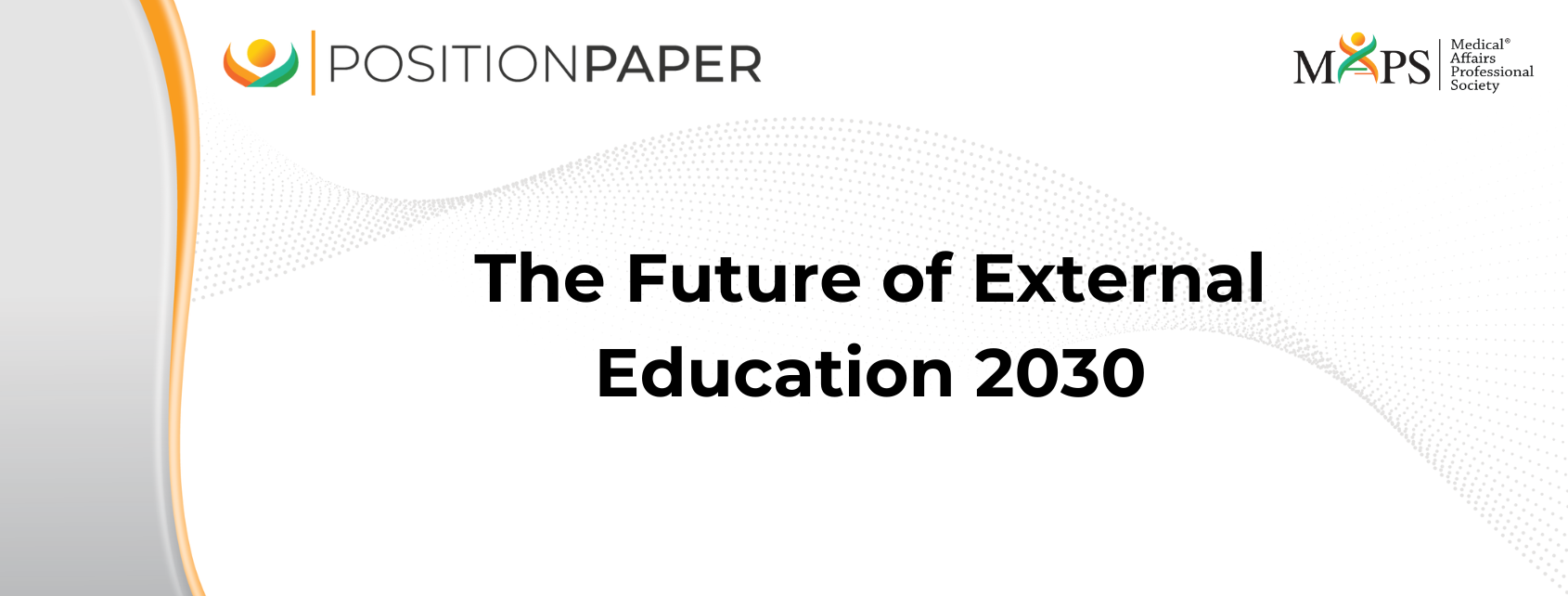DISCLAIMER: The views, statements, and opinions expressed in this White Paper are our own and do not represent those of our employers. The strategies and tactics described herein would be subject to multi-functional review and approval prior to implementation by an organization.
Introduction
External Medical Education involves providing a variety of tools and content to healthcare professionals (HCPs), payers, and patients or caregivers aimed at closing specific knowledge, competency, or performance gaps. It encompasses several overlapping categories:
- Continuing Professional Development (CPD) includes a broad range of activities such as leadership or practice management. • Continuing Medical Education (CME) and Continuing Education (CE) aim to provide the medical, surgical, or device knowledge or skills needed for optimal patient care.
- Performance Improvement (PI) involves evidence-based performance measures.
- Quality Improvement (QI), in response to quality concerns, will improve patient outcomes or reduce costs.
External Education should focus on providing scientifically sound education to improve medical knowledge and, ultimately, clinical practice. According to MAPS, the primary goal of Medical Education should be to enhance the recipient’s understanding of a disease state and pertinent data and ensure the safe and effective usage of a product or drug delivery system or medical techniques. (1) (2)
External Education generally consists of three buckets: Firstly, Independent Medical Education (IME), which is free from Commercial influence and conducted by an independent organization and can be funded with Commercial support; secondly, company-led education which can be driven by various functions, including Medical Affairs or Commercial teams; and thirdly, collaborations between a sponsor company and medical society or other credible organizations. (3) However, it should be noted that regulators consider only two buckets; independent and non-independent. Industry can be held responsible and accountable for any External Education that is not 100% independent. (10)
Each type of External Education can support products in different phases of their life-cycle, and all should be deployed synergistically as part of an overarching strategy aimed at accomplishing organizational goals. In doing so, External Education is an important function enabling Medical Affairs to demonstrate its value as a strategic pillar within an organization.
In the US, most External Medical Education funding from the pharmaceutical (pharma) industry is awarded to IME. However, in recent years, particularly with the growing impetus towards omnichannel engagement, company-led External Education has been on the rise, following trends in other regions.
In planning External Education, four core elements are essential: a Needs Assessment, instructional design, execution, and outcomes measurement. Each stage plays a critical role, starting from identifying the specific gaps or needs in knowledge or skills. This assessment then informs the development and execution of the External Education strategy. Instructional design tailors the educational content to address these gaps effectively. (4)
The execution phase involves the actual delivery of this education, followed by measuring outcomes to evaluate the impact and effectiveness of the educational program. This comprehensive approach ensures that the education provided is relevant and effective in addressing the identified needs and guides improvements or course corrections as necessary.
Regulatory Responsibilities
While the Medical Affairs function provides scientifically sound and fair balanced medical education, commercial educational offerings can be promotional in tone. Consequently, regulators may consider the intent of Medical Education when assessing it. In the US, the FDA has jurisdiction over any promotional content—including scientific or educational activities that mention approved and pre-approved products. The FDA has issued guidance documents that allow for exceptions in scientific communication, specifically for content that is not promotional. One such exception is the ‘Independence’ safe harbor provided by IME. (10) This safe harbor ensures that educational materials and activities are independent and not influenced by manufacturers. Materials and activities must comply with the Accreditation Council for Continuing Medical Education (ACCME) standards to achieve independence (regardless of whether an activity is certified for credit). (3) These standards guarantee that accredited CME meets the needs of patients and the public, is based on valid information, and remains free from commercial bias.







